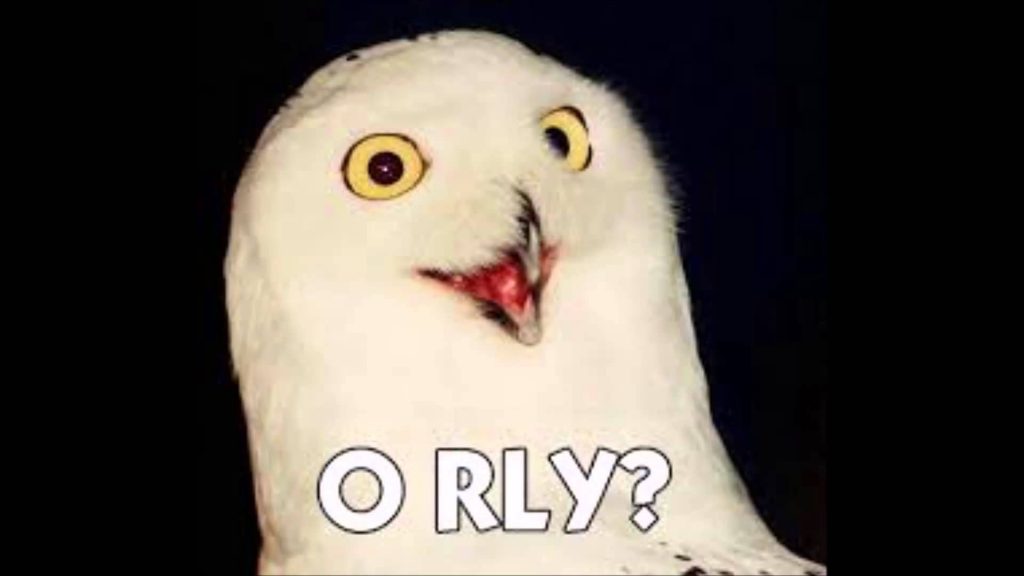Table of Contents:
Fast travel toward Web development is a phenomenon which uses modern, innovative technologies. But it’s like saying nothing at all. It is redefining of the way in which we organize, communicate and collaborate with each other, leading to spectacular successes and spectacular failures. Let’s try to understand the concept of the evolution of the Web from the basics to today, and beyond to the trends in the field.
Nowadays, web technology can be easily defined by the user in various descriptive ways. In fact, many users are not even familiar with where the name WWW came from. And history must be learned from the beginning, otherwise it is not even worth starting.
The term World Wide Web was introduced by British physicist and programmer Tim Berners-Lee in 1989. It was the idea of a worldwide project based on something called hypertext – a large bodies of data held together by links. Navigating during web journey is entirely up to the user. This is the secret of the hyper- prefix, which is not present in, for example, a linearly read book of fiction. Although the terms hypertext and hyperliterature are also used among literary fiction texts, for example when describing Julio Cortázar’s 1963 novel The Class Game, and it was in that year that the term hypertext was introduced.
The proposal, which his boss described as “vague but exciting,” was not initially accepted. Berners-Lee teamed up with Robert Cailliau, a Belgian engineer at CERN, to refine the proposal, and in 1990 the Englishman’s boss gave him time to work on the project. After initially naming the project Information Management, Berners-Lee tried names like Mine of Information and Information Mesh before deciding on WorldWideWeb. This laid the groundwork for…
World Wide Web 1.0
Web 1.0 was the first implementation of the Web and lasted from 1989 to roughly 2005. It could be defined was as a network of information connections. At the time, according to its creator, the World Wide Web was a “read-only” network. It provided very little interaction, where you could share information together, but there was no real opportunity to interact with the site, or more colloquially, the page. This first generation was referred to as an information space where objects of interest were defined as resources identified by Uniform Resource Identifiers (URIs; URIs). The role of the network was thus very passive. Everything was static and nothing hardly moved there. You could read and nothing more. Such a remote library.

Web 1.0 technologies included basic HTML, HTTP, and URI protocols. Key features and assumptions included:
- read-only content,
- online presence, and making information available to anyone at any time,
- static web pages and the use of basic Hypertext Mark-up Language,
- webmasters were responsible for updating users and managing the content of the site only.
As a limitation, it is worth pointing out that Web 1.0 sites were only understood by humans (web readers), they do not have machine-compatible content like today’s crawlers. Today, Google’s indexing robot “walks” around the page and evaluates its content, back then no one even thought about it. There was also a lack of dynamic representation and no console for dynamic actions.
Aliweb as first search engine
Google’s great-grandfather. Created by Martijn Koster at CERN in 1993, Aliweb was the world’s first search engine. Although it allowed early web users to index their sites using keywords and written descriptions, it never really took off and had a relatively short life. The coolest part is that you can still access Aliweb.
Click the image to enlarge:


This is what it looked like. It’s hard to judge Web 1.0 today, but it was electrifying at the time and, in our opinion, continues to be so. Pioneer Berners-Lee later jokingly admitted that he “could not put two slashes after http”. At least nobody was spamming junky videos every few seconds at the time.
Web 2.0 as new Internet generation
Web 2.0 is whole new different generation of the web. Defined by Dale Dougherty in 2004 as the read-write web. The concept began with Tim O’Reilly, founder of the O’Reilly Media Company and author of many publications about the Internet, including 2009’s What is Web 2.0, although it had been mentioned earlier in 1999 by author Darcy DiNucci.
Web 2.0 sites allowed for the gathering and management of global groups with common interests, and the medium offered social interaction.

Web 2.0 ułatwiało udział w wydarzeniach, współpracę między internautami (nawiasem mówiąc iękne i już prawie zapomniane słowo) i oferowało pewne praktyki rozproszone, które umożliwiają formalne i i nieformalne sfery codziennych działań w sieci. W ślad za tym idzie określenie Web 2.0 z angielskiego jako Participative, Participatory lub Social Web, czyli sieć nastawiona na współpracę i współuczestnictwo.

Let’s take a look at the implementation of the Web 2.0 tag cloud. This is a photo in the Botland blog resource, so you won’t find links to the relevant Web sites here, but it does give us some insight into what the 2.0 standard was centered around. Visible phrases include ease of use, usability, fun, economics, mobility, affiliation, blogs, among others. On the technical side: AJAX, CSS designs, microformats, open API or RSS. There are also “moving parts” – audio, video. Progress at full speed.
All of this laid the groundwork for social networking, self-publishing platforms (e.g., easy-to-use WordPress tools for creating blogs and websites), “tagging” that allows you to… tag websites, videos, or photos, or “like” buttons.
Client-side, or browser, technologies used in Web 2.0 development included Ajax and JavaScript frameworks. Using the techniques they offer, web designers can make pages function like desktop applications. Currently, Google Docs uses this technique to create an online word processor. Software that has made Web 2.0 both an application platform and a document server include Adobe Reader, Adobe Flash, Microsoft Silverlight, ActiveX, Oracle Java, QuickTime or Windows Media.
Web 3.0 – Internet of today (probably tomorrow, too)
The advent of Web 3.0 could already be prophesied by Tim Berners-Lee’s statements. He dreamed about the Internet where computers could analyze all the data on the Web. Mentions around 2008 suggested the arrival of intuitive and intelligent software that would search for information tailored to us in an even deeper sense. And “deeper” is a really meaningful word here. Why is this also the Internet of tomorrow? Not in the sense of that which has not yet arrived, but that which still be in implementation phase tomorrow – to distinguish it from the “Internet of the future”. The change is happening now.
The era of “Matrix” fascination was in full swing, although the advent of targeted ads and new SEO practices, or search engine optimization, was only just being anticipated. Meanwhile, YouTube already existed, and had been since 2005. It seems like it has always existed, doesn’t it? Many of the concepts and solutions native to Web 3.0 are familiar to more than just the Millenials and Generation Z.
And the first YouTube video looked like this – “me at the zoo”. April 23, 2005. On the video one of the creators of the service Jawed Kharim, the zoo in American San Diego and the African elephant Loxodonta africana. The famous question “maybe it’s time to go back to the zoo?” was answered with a 4K 60 fps version of the film.
Web 3.0 is the third generation of web services for websites and applications that focuses on using machine understanding of data to provide a data-driven and semantic web. The ultimate goal of Web 3.0 is to create more intelligent, connected, and open websites.

Web 3.0 hasn’t been really implemented yet, so it doesn’t have a solid definition. Forbes was just writing about its arrival last year, so we’re still “ahead.” Some of the concepts, however, have already taken off in practice. It took more than a decade to move from the original Web 1.0 to Web 2.0, and it is expected to take just as long, if not longer, to fully implement and transform the Web into Web 3.0.
The technologies that some believe will create and ultimately define Web 3.0 are now being developed. Smart home devices using wireless networks and the Internet of Things (IoT) are two examples of how Web 3.0 is already impacting technology. It also goes without saying that AI, machine learning and the increasingly eager use of Peer-to-Peer (P2P) technology in the form of blockchain, torrents are galloping ahead. P2P applications will expand, and it is now not so easy to present the basis of a litigation case against decentralized networks in court.
Once again, the words of the father of the Internet and many times mentioned today, T. Berners-Lee, hit the nail on the head, as he noted that Web 3.0 is in a sense a return to Web 1.0. Why? You don’t need any permission from a “central authority” to publish anything, there’s no control node, no single point of failure, and… no kill switch to shut it all down if necessary. However, even here we would have to oppose and find the other side of the coin by going back to the development of AI, whose tools help to catch all abuses better and better.
Quo Vadis, Nexus? What will Web 4.0 be?
While not-so-reliable sources of futurists and home edition visionaries report that we are already in full cyberpunk and Web 4.0, this brings to mind outdoor 8D cinemas and other monstrosities of over-enthusiasm. According to the 2017 publication Concept and Dimensions of Web 4.0, an abstract of which can be found at researchgate.net, Web 4.0 is “a new evolution of the networking paradigm based on multiple models, technologies, and social relationships. The concept of Web 4.0 is not entirely clear and unanimous in the literature because it consists of several dimensions. (…) The results show that the number of studies published from 2009 to 2017 in this field increased significantly, reaching a peak in 2014. Furthermore, we identified five dimensions related to the Web 4.0 paradigm, where the terms “pervasive computing” and “ubiquitous computing” are the most used in the literature. On the other hand, terms such as ‘Web 4.0’, ‘symbiotic Web’ and ‘Web social computing’ are not frequently used.”

The real Web 4.0 is to create what is described as a symbiotic web – the boundary between human and machine will blur. Full VR and web meetings, artificial systems communicating the way humans do using natural language – yes, we’re working on it, but the complete change hasn’t happened yet. It will change business, industry and medical sectors incredibly, the user will be able to control even more aspects, but… will this actually all happen? It’s better to be vigiliant and observe first – hope is a first step on the road of dissapointment of hoping the best for how will it affect personal and social life.
We don’t know. And in a way, we’re back to the original concerns about the Internet that never became obsolete. Such a change occupies more than just IT professionals. The real revolution has already involved sociologists, linguists, cognitive scientists, psychologists and more. All eyes focus on the Internet – one of the most important inventions of mankind.
How useful was this post?
Click on a star to rate it!
Average rating 5 / 5. Vote count: 1
No votes so far! Be the first to rate this post.




















